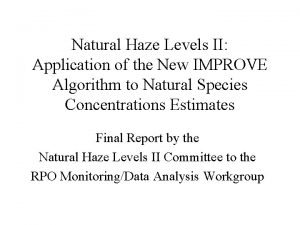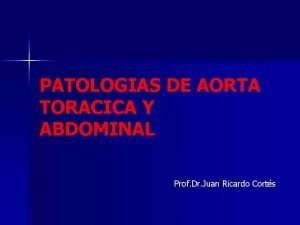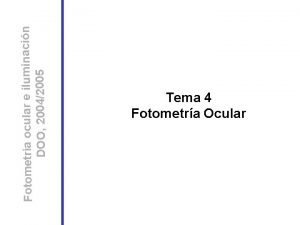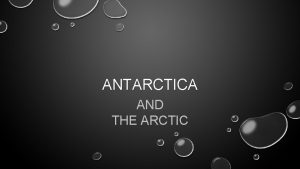A New View of Arctic Haze Jim Crawford








- Slides: 8

A New View of Arctic Haze Jim Crawford NASA Langley Research Center Asia Europe Fires North America

Urgent Need to Better Understand Changes in the Arctic Atmosphere THE ARCTIC IS A BEACON OF GLOBAL CHANGE • Receptor and accumulator of pollution from northern mid-latitudes continents • Increasing forest fires in Siberia, Canada, Alaska blanket large areas with smoke • Rapid warming over the past decades – faster than anywhere else on Earth • Arctic haze and other pollution may be an important contributor to the warming, with complicated feedbacks Our goal is to test and improve the models used to predict changes in Arctic pollution and climate

Arctic Research of the Composition of the Troposphere from Aircraft and Satellites (ARCTAS) Flights during Spring (Arctic Haze) and Summer (Boreal Fires) DC-8 P-3 B B 200

Long-range transport from mid-latitudes into the Arctic results in an aerosol haze (blue) that is mixed throughout the troposphere. cloud High Spectral Resolution Lidar Observations of Arctic Haze from the NASA B 200 aircraft

Intense aerosol plumes originating from fires were superimposed on the background Arctic haze. Aerosol Extinction How important are they relative to the background haze?

Anomalies in fire counts and carbon monoxide corroborate unusually strong fire emissions over Siberia in April 2008.

Eastern Asia (110 E – 130 E) CALIPSO (observations) GMAO (model) RAQMS (model) CALIPSO observations suggest that model transport of aerosols to the Arctic from Siberian fires is too strong. Sharp gradient observed by CALIPSO not seen in model predictions. Why? Emissions? Scavenging?

Although ARCTAS observations show a larger than expected contribution from fire emissions in spring, this may not be inconsistent with recent trends in boreal fires. Early results from an inverse modeling study of carbon monoxide suggest that a reduction in estimated fire emissions by factors of 2 to 3 is required to match observed levels. Model sensitivity to scavenging assumptions are also being evaluated.















